#Amtrak Genesis
Explore tagged Tumblr posts
Text

his stupid square helmet </3
#playing around with some makeup looks#he's barefaced most of the time. formal is for press stuff/special excursions. and he doesn't actually race#but if he did he's gotta be repping amtrak#starlight express#stex#stex ocs#david.art#david.ocs#cranker the diesel#(he's a GE genesis p42 btw!!)
250 notes
·
View notes
Text

MBTA GP40MC 1139, F40PH-3C 1074, HSP46 2003, and Amtrak GE P42DC 104 (May 26 2025)
#mbta#amtrak#downeaster#transit#public transportation#rail#commuter rail#trainposting#the gangs all here#gp40#f40ph#ge genesis#hsp46
3 notes
·
View notes
Text
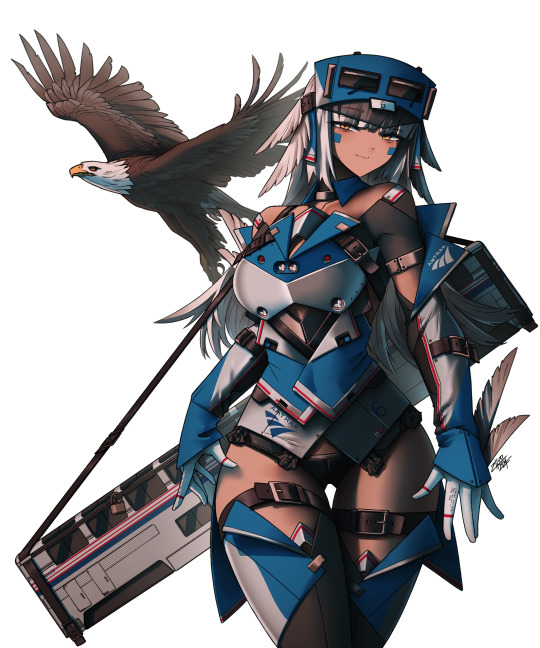
AMTRAK GE Genesis P42DC by zhvo
21 notes
·
View notes
Note
On today's episode of breaking Winter's mind with trains because I've dedicated so much of my nerd power to it I have little to say on other subjects, I present: The General Electric Genesis P42.

Owned and operated by Amtrak, America's only big passenger rail company, they were built in the late 90's and we're basically upgrades to the P49's. They were basically this generation's equivalent of the SD40-2, which is this.

(Basically these things were wicked common back in the day)
Unfortunately, the P42's are being retired from service throughout the next decade despite still being Amtrak's most reliable locomotive that can do 110 mph while pulling 38,000 pounds. And last year, a fire caused severe damage to one in a yard.
I understand the need to move on to new technology, but it's a real shame. And as far as I know, they don't really have a place elsewhere, since they aren't designed to haul freight. So unless Canada or some new rail company wants to buy them up, they will probably be scrapped and melted down for parts.
”Let’s go, more train facts! You scavengers supply quite a lot of these and I don’t complain one bit!” -Winter
[plain text: Let’s go, more train facts! You scavengers supply quite a lot of these and I don’t complain one bit!]
7 notes
·
View notes
Text

Train of the day is: Amtrak GE Genesis! ( X )
#locomotive#diesel#diesel locomotive#diesel electric locomotive#electro diesel locomotive#dual mode locomotive
39 notes
·
View notes
Text



new roll of film just came back! amtrak genesis and acs64 locomotives at new haven union
mbta commuter rail at bridgewater
mbta blue line at beachmont
10 notes
·
View notes
Text

Well unfortunately.. Another Amtrak phase 1 is lost..
Context: This General Electric P42DC operated by amtrak numbered 161 wearing the phase 1 paint scheme as part of amtrak's 50th anniversary was destroyed in a fire at Dc at Amtrak's ivy city maintenance facility in Washington DC. But luckily, no one was killed or injured by the fire but however its likely unknown what caused this but also other cars were damaged..

This is what it looks like after the accident..
The locomotive involved was Amtrak 161 which its a General Electric P42DC which its part of General Electric's Genesis series of diesel electric passenger locomotives, introduced in 1993 by amtrak to replace the EMD F40ph. This locomotive involved was built in 2001 at Ge's Erie plant in Erie Pennsylvania as one of amtrak's 207 p42dc delivered to them. The locomotive is powered by the General Electric 7fdl-16, a 4 stroke v16 turbocharged diesel engine using a General Electric Gmg 195 alternator.
0 notes
Text

Ever seen 2 Amtrak charger locomotives and 1 genesis locomotive, now you have!
1 note
·
View note
Text

sophia ⋮ filam ⋮ any pronouns ⋮ 19
This is my twitter. Here is my instagram.
Here’s my letterboxd as well. Big movie guy.
some fun stuff about me
I love geography and travel. I love amtrak and trains and public transit. I’m a SoCal—which I think is a big part of my identity—but I am so excited for the California high speed rail that’s gonna to run from San Francisco to Anaheim. It’s going to be so great and phase 2 of the project will also be so exciting. I’m geeked.
I like sports. In the loop with a couple such as mlb, softball, nba, tennis, and figure skating. As well as a number of motorsports, if you haven’t scrolled a bit through my account.
I enjoy a lot of television, especially anything from HBO (or MAX, I guess). Some of my TV favorites are Succession, Better Call Saul, Attack on Titan, Hannibal, Big Little Lies, The Young Pope, Neon Genesis Evangelion, and so much more. I even have a serialzd, if that's at all interesting.
I said previously that I love public transport, but I am not an anti-car kind of person. I do love driving. I love going out. My dream car is my uncle’s 2013 McLaren MP4-12C.
My favorite Spanish word is cerveza 🍺 .
My favorite numbers are 7, 8, 15, 87, 187, and 875.
That’s all there is to it. I’m passionate about a lot of stupid things. Thanks for reading.
0 notes
Text
youtube
The Amtrak GE Genesis is a very cool engine.
1 note
·
View note
Text
Train Talk Tuesday
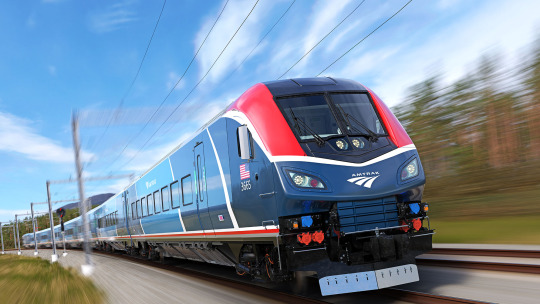
Train Talk Tuesday: When I did that post on The Good, The Bad, and The Future of Amtrak, something that I should have mentioned was Amtrak's issues regarding rolling stock, since it's something that has become a bit of a larger issue concerning Amtrak's future plans. It's been bugging me ever since, so for this week I will be discussing some problems Amtrak has been having with rolling stock recently, and I'll discuss what the root of the problem is, along with how to (maybe) fix it.
Keen-eyed readers may recognize that this sounds similar to a much older post I did in the past, and this does touch on what the older post already covered. Normally I don't like rehashing topics for numerous posts, but due to that post being done when I was super burnt out and it being of fairly low quality to what I do now, I figured a revisit of this topic wouldn't hurt too much. I promise, this will not be the norm going forward.
Are we good? Okay then, all aboard the first Train Talk Tuesday post of 2024!
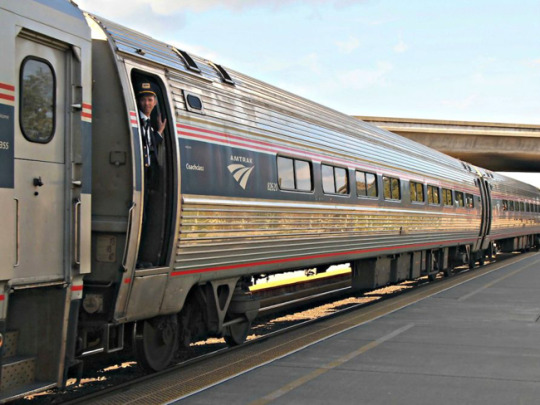
Now let's first get started by discussing what exactly is rolling stock, to get everyone up to speed.
Rolling stock is a term used to refer to the vehicles used on a railroad, for example, passenger cars, freight cars, locomotives, multiple units (both diesel and electric), etc. Basically anything that can run on the railroad falls under the term "rolling stock". Trains are simply different rolling stock connected together. Pretty simple, eh?
So now that we know what rolling stock is, what exactly is going on with Amtrak's rolling stock?
There's two main thorns Amtrak has been suffering from with their new order of rolling stock, being the new Acela trainsets and the new Siemens Charger locomotives.
New Acela
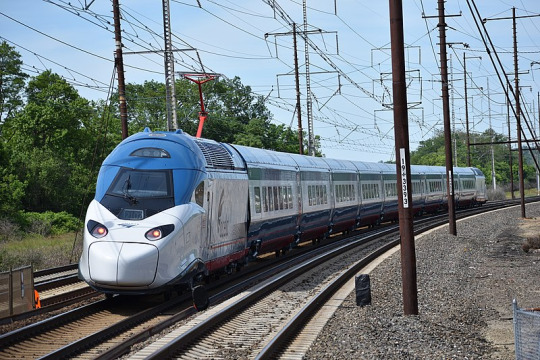
The Acela is a high-speed rail service that runs on the Northeast Corridor between Washington D.C. and Boston, Massachusetts in the United States. I won't get into too much detail as to the history of the Acela for the sake of time but what you need to know is it began revenue service in 2000 and it still continues to run to this day with its original trainset (pictured below), but in 2016 Amtrak gained a loan from the Federal Government to order the next gen Acela trainsets (pictured above).
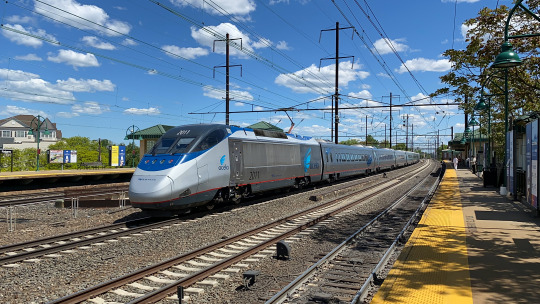
Unfortunately the new Acela trainsets have been delayed due to numerous defects found during the testing phase, being squarely the fault of Alstom, the company who Amtrak paid to build the new Acela. These delays have pushed back the new Acela from a potential introduction date of 2022 all the way to sometime this year (2024). It's super disappointing to see how Alstom really dropped the ball hard on this trainset, especially since the old sets have been in use for over twenty years at this point, with it being well overdue for an overhaul.
Siemens Chargers

This one is a bit less known compared to the Acela, but it's still worth discussing as it's another example of Amtrak getting hamstrung by delays in rolling stock.
Similar to the Acela, the Siemens Charger locomotives are brand new locomotives built by Siemens to replace the aging GE Genesis locomotives (pictured below) that have been the backbone of Amtrak for decades now.
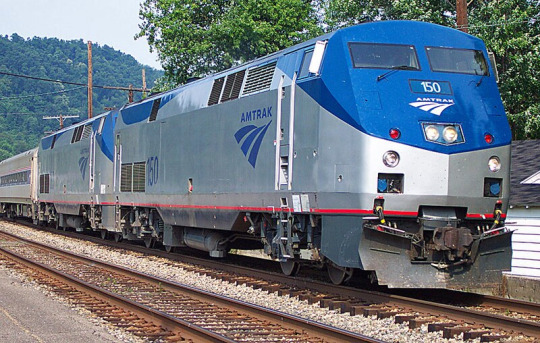
Unfortunately, the Chargers have been having teething issues for the Midwest services, which have kept the Chargers from being deployed across the country to replace the Genesis. The most notable issue was that in cold temperatures, the Charger would for some reason lose power, which would grind the entire train to a halt. It doesn't take a genius to know why that's a bad thing. (Good video talking about the issues here)
And unfortunately both of these delays have only forced Amtrak to stretch its aging fleet very thin, sometimes causing Amtrak to simply cancel trains due to a lack of available rolling stock. This will only cause more damage to Amtrak's reputation and it will just push people to fly or drive over taking the train.
So what exactly is causing both of these issues?
This is a very hard question to answer, mostly because I have no idea what its like to design rolling stock, but I do think I know the answer, and its because neither Siemens nor Alstom are domestic manufacturers.
Now, that may be a bit confusing, as both Alstom and Siemens have facilities here in the United States, along with companies like Stadler and Kawasaki, but that doesn't change that none of those companies were built up making rolling stock for the United States, and that's the big issue here.
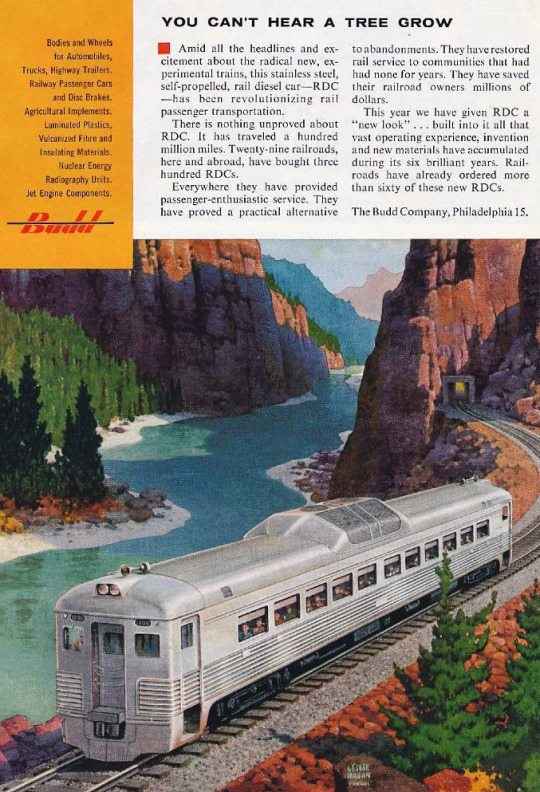
Domestic manufacturers are incredibly important to a country trying to expand rail as domestic manufacturers are usually better at adapting at what will work for a country's rails better than an international manufacturer. There is a catch by this though, which is that said domestic manufacturer can easily go under very quickly if it puts out a lemon due to the hyperfocus on selling rolling stock only for the home country. Countries like Germany with Siemens, France with Alstom, and Switzerland with Stadler have supported their domestic manufacturers even if they make a lemon or two because they know how integral they are to the country as a whole. Unfortunately, this is something the United States didn't get, and as a result the United States lost both Budd Co. and the St. Louis Car Company, the former being the company which built all of Amtrak's current Amfleet coaches. Had Budd remained in operation to this day, I bet that Amtrak would have ordered new rolling stock from them instead, which would have been delivered with less delays due to Budd understanding what the United States is like and adjusting in the process. And this idea of supporting domestic companies isn't foreign at all, the U.S. does this with automobiles, where foreign built cars have tariffs put on them to make customers support domestic companies instead, due to their cheaper price.
So what can Amtrak do now?
Unfortunately, there really isn't much Amtrak can do. The only company left making rolling stock domestically is the Brookville Equipment Corporation, and while it is a good idea to throw lots of money their way to keep them afloat, I don't think Brookville would be able to fill Amtrak's order for new rolling stock, due to how large it is. The only thing Amtrak can reasonably do is continue pressing on with both Alstom and Siemens and have them eventually deliver the new rolling stock. The new rolling stock Amtrak has ordered is going to be a great help for Amtrak, that is something I am sure of, but the delays and the damage it has caused could have likely been avoided had Amtrak sought out a domestic manufacturer instead.
So, conclusion time?
Going forward I hope that both Alstom and Siemens learn from this as to not cause many more delays for Amtrak. The new Amtrak Airo trainsets will be ordered through Siemens, so only time will tell if Siemens learned anything from the debacle with the Chargers. In the coming decades where Amtrak will need a lot more rolling stock to provide more service to Americans across the country, delays in rolling stock like these cannot become the norm. And I hope that sometime in the future the U.S. fosters a proper domestic rolling stock industry to help Amtrak with future orders. Until then, I guess people like you and me will continue to wait for Amtrak's new rolling stock to finish their long crawl to revenue service.
1 note
·
View note
Photo
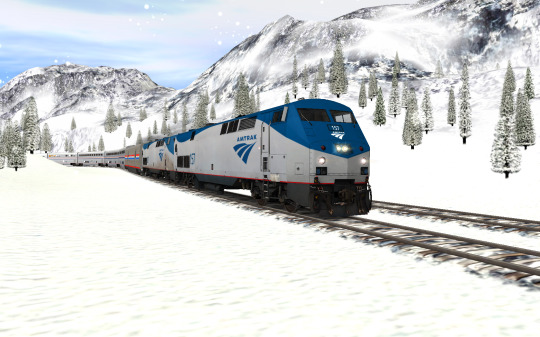
Day 5: GE Genesis
Info from Wikipedia:
General Electric Genesis (officially trademarked GENESIS) is a series of passenger diesel locomotives produced by GE Transportation, then a subsidiary of General Electric. Between 1992 and 2001, a total of 321 units were built for Amtrak, Metro-North, and Via Rail.
The Genesis series of locomotives was designed by General Electric in response to a specification published by Amtrak and ultimately selected over a competing design presented by Electro-Motive Diesel (EMD). Until the introduction of the Siemens Charger, the Genesis series had the lowest height of any North American diesel-electric locomotives, being 14 inches (356 mm) lower than the previous-generation F40PH. This low height allows the locomotive to travel easily through low-profile tunnels in the Northeast Corridor.
The GE Genesis series is unique among recently manufactured North American passenger locomotives in that it uses a single, monocoque carbody design styled by industrial designer Cesar Vergara, thus making it lighter, more aerodynamic, and more fuel efficient than its predecessors (F40PH, F59PH, P30CH, P32-BWH). However, this makes it more costly and time-consuming to maintain and repair. In 2004, Amtrak started installing bolt-on nose cones on its units for easy replacement in the event of a grade crossing collision with a vehicle. As an example of the improvements over the predecessor locomotives, the Genesis is 22% more fuel-efficient than the F40PH while producing 25% more horsepower. In addition, all Genesis locomotives have four-stroke engines instead of the two-stroke engines previously used in EMD counterparts.
The Genesis unit is a fully computerized locomotive which automatically controls all on-board functions, thus producing high reliability while keeping the maintenance requirements low. For example, its computers can automatically reduce the power plant's output in the event that the locomotive is overheating, or suffering from low oil pressure, low water pressure, or reduced airflow into the intakes, thus making it still operable.
All Genesis engines can provide head-end power (HEP) to the train drawn from an alternator or inverter powered by the main engine at a maximum rating of 800 kilowatts (1,100 hp), making each unit capable of providing HEP for up to 16 Superliner railcars. The P40DC and P42DC power plants can supply 60-hertz head-end power either from the HEP alternator with the engine speed-locked to 900 rpm (normal mode) or from the traction alternator with the engine speed-locked to 720 rpm (standby mode). In the latter case, traction power is unavailable. The P32AC-DM powerplant does not have to be locked at a certain rpm because it utilizes an HEP inverter, which allows the prime mover to run at 1047 rpm when providing both traction power and HEP, and to idle at 620 rpm (or notch three) while still providing HEP for lighting and air-conditioning when not providing traction power.
The trucks of Genesis locomotives were made by Krupp Verkehrstechnik, which has since been absorbed by Siemens Mobility; the trucks on the newest Genesis locomotives carry the Siemens name.
Three models of Genesis were built by General Electric, the P40DC, P42DC, and P32AC-DM.
The P40DC (GENESIS Series I) or Dash 8-40BP (originally known as the AMD-103 or Amtrak Monocoque Diesel - 103MPH) is the first model in the Genesis series, built in 1993. The locomotive operates in a diesel-electric configuration that uses DC to power the traction motors, producing 4,000 horsepower (2,980 kW) output at 1047 rpm. Power output to the traction motors is 3,550 hp (2,650 kW) when running in HEP mode (900 rpm) with a 0 kW HEP load. Traction horsepower in HEP mode decreases to a bare minimum of 2,525 horsepower (1,880 kW) when providing the maximum 800 kW (1,100 hp) HEP load to the train. The P40DC is geared for a maximum speed of 103 miles per hour (166 km/h). The P40DC was succeeded in 1996 by the P42DC.
A feature unique to the P40DC and P32AC-DM is a hostler stand at the rear of the locomotive providing increased visibility and reversing capabilities to the engineer while conducting reverse operations. When a unit is in operation from this stand it is limited to 10 mph (16 km/h) and a dead man's switch protects against movement without an operator being present. Another unique feature to the original P40DC were the two strobes above the cab and an emergency flasher between the strobes. When they were overhauled, those features were removed.
Both the P40DC and P42DC allowed Amtrak to operate heavy long-distance trains with fewer locomotives compared to the older EMD F40PH locomotives; two P40DCs could do the same work as three F40PHs. Additional deliveries of the P42DC ended up replacing the P40DCs. Three units were wrecked (819 in the 1993 Big Bayou Canot train wreck and 807 and 829 in the 1999 Bourbonnais, Illinois, train crash) and scrapped. Eight were leased and later sold to the Connecticut DOT for Shore Line East in 2005, and four were rebuilt and sold to New Jersey Transit in 2007; NJ Transit sold their units to ConnDOT in 2015. The remaining 29 units were placed out-of-service for many years. 15 of these units have been rebuilt using 2009 ARRA stimulus funds and returned to service, now in the Phase V livery, except for 822, which is painted in Phase III Heritage livery for Amtrak's 40th Anniversary. The units that were not rebuilt or sold have since been disposed.
In January 2018, ConnDOT awarded a contract to Amtrak to overhaul their twelve P40DC locomotives at the Beech Grove Shops. The first unit was completed in early 2021.
By 2007, New Jersey Transit had upgraded their P40DC units with updated prime movers to match the 4,250 horsepower (3,170 kW) of the successor P42DC. This was done by readjusting the position of the lay shafts within the prime mover. Amtrak has returned 15 of their P40DC units to service as part of a project funded through the American Recovery and Reinvestment Act of 2009.
The first of the units were returned to service in March 2010 after being overhauled at the Beech Grove Shops. They were upgraded like NJT's units had been a few years before to have 4,250 hp (3,170 kW) and match the P42DC's maximum speed of 110 mph (177 km/h). They also received updated cab signaling systems. The upgraded locomotives still have mechanical air brakes, which makes them most suitable for trains that only require a single locomotive. This differs from the electronic air brakes on the P42DC and P32AC-DM. They also feature a builder's plate indicating that they were rebuilt under the auspices of the TIGER stimulus program.
The P42DC (GENESIS Series I) is the successor model to the P40DC. It has an engine output of 4,250 horsepower (3,170 kW) at 1047 rpm, or 3,550 horsepower (2,650 kW) when running in HEP mode (900 rpm) with a 0 kW HEP load. Traction horsepower in HEP mode decreases to a bare minimum of 2,525 horsepower (1,880 kW) when providing the full 800 kW HEP load to the train.
The P42DC has a maximum speed of 110 mph (177 km/h). Tractive effort is rated at 280.25 kN (63,000 lbf) of starting effort and 169 kN (38,000 lbf) of continuous effort at 38 mph (61.2 km/h) given wheel horsepower of 3,850 horsepower (2,870 kW). P42DCs are used primarily on most of Amtrak's long-haul and higher-speed rail service outside the Northeast and lower Empire Corridors. They will be replaced on long-distance service by 125 Siemens ALC-42 Charger locomotives between 2021 and 2024, but will remain in service on corridor trains.
Via Rail Canada has utilized P42DC locomotives since 2001, when they replaced the LRC locomotives in 2001. They are currently on services with speeds up to 100 mph (161 km/h), mainly on the Quebec City-Windsor rail corridor.
The P32AC-DM (GENESIS Series II, short for "Passenger, 3,200 hp (2,400 kW), Alternating Current, Dual Mode") was developed for both Amtrak and Metro-North. They can operate on power generated either by the on-board diesel prime mover or power collected from a third rail electrification system at 750 volts direct current; the third-rail shoes are used on the over-running third-rail into Penn Station for Amtrak units and the under-running third-rail into Grand Central Terminal for Metro-North. The P32AC-DM is rated at 3,200 horsepower (2,390 kW), 2,900 horsepower (2,160 kW) when supplying HEP, and is geared for a maximum speed of 110 mph (177 km/h). Tractive effort is rated at 275.8 kN (62,000 lbf) of starting effort from 0 mph (0.00 km/h) to 14 mph (22.5 km/h) and 113.43 kN (25,500 lbf) of continuous effort at 40 mph (64.4 km/h) given wheel horsepower of 2,700 horsepower (2,010 kW).
The P32AC-DM is unique as it is equipped with GE's GEB15 AC (alternating current) traction motors, rather than DC (direct current) motors as used in the other subtypes. It is also only one of two modern American electro-diesel locomotives with third-rail capability, along with the EMD DM30AC operated by the Long Island Rail Road. NJ Transit and Exo's Bombardier ALP-45DP electro-diesel locomotive can operate from overhead catenary electrification.
The P32AC-DM is only used on services operating north from New York City, where diesel emissions through its two fully enclosed main terminal stations are prohibited. Amtrak rosters 18 P32AC-DM locomotives and uses them for its Empire Service, Ethan Allen Express, Lake Shore Limited (New York section), Adirondack, and Maple Leaf services, all which travel to New York Penn Station. Metro-North rosters 31 P32AC-DM locomotives on push-pull trains to Grand Central Terminal; four are owned by the Connecticut Department of Transportation.
In December 2020, the Metropolitan Transportation Authority of New York board approved a Federal Transit Administration-funded $335 million contract for 27 dual-mode locomotives, based on the Siemens Charger design. The new dual mode locomotives will replace the 27 existing P32AC-DM locomotives used on Metro-North's Hudson Line, Harlem Line, and Danbury Branch; they will use third rail electric power to enter Grand Central Terminal. The order includes additional options for up to 144 more locomotives, which includes 32 additional for use by Metro-North, 20 for the New York State Department of Transportation (for Amtrak Empire Service trains), and 20 for the Connecticut Department of Transportation.
models and route by: Jointed Rail, AmericanTrainz, Auran, and Download Station
#GE#General Electric#Genesis#GE Genesis#Amtrak#Amtrak Genesis#Diesel Locomotive#Trainz Simulator#Trains#Advent Calendar#Christmas#Christmas2022 🎄🎅🎁
0 notes
Link
I am officially old, having been trackside as the AMD103s racked up their first miles- my first AMD103 sighting having been seeing one trailing two F40PHs pulling the Westbound Sunset Limited from Miami out to Los Angeles. Now I will apparently live to see the GE Genesis locomotives rumble and screech their way to the scrapper’s torch. I won’t miss them as much as I missed F40PH’s...they were kind of ugly and they seemed to break down a lot. Granted they were a tad more reliable than the F40PH’s, but comparing brand-new multimillion-dollar locomotives to over 30 year old EMDs that had been to hell and back is faint praise. I for one will welcome Amtrak’s Charger era with arms wide open. If nothing else, this face looks a lot more appropriate leading a Silver Meteor or an Empire Builder and crews will get a bit of visibility instead of having to squint out of the bunker slits.
7 notes
·
View notes
Photo

#adventuresintouring #adventures #bigcityrailroad #amtrak #train666 #666 #thegreatamericanadventureofmodernbigcityrailroading #tourlife #tour #philly #thelastdominotour2021 #thelastdomino #genesis (at Philadelphia Amtrak Station) https://www.instagram.com/p/CXEclV0JGwS/?utm_medium=tumblr
#adventuresintouring#adventures#bigcityrailroad#amtrak#train666#666#thegreatamericanadventureofmodernbigcityrailroading#tourlife#tour#philly#thelastdominotour2021#thelastdomino#genesis
0 notes
Text

Double Genesis overpowered Amtrak consist running probably in the Cascades somewhere. Anyone know?
10 notes
·
View notes
Photo

Amtrak/Downeaster
Inside the cab of the Amtrak/Downeaster Genesis Engine #822.
Photographed by Mike Duprey, August 3, 2002.
8 notes
·
View notes